Grade 5 Science Quiz
Exploring Science for Grade 5 Students
Introduction
Science is a fascinating subject that allows us to understand the world around us. For Grade 5 students, science introduces more complex concepts, helping them to explore the processes that make life possible and the forces that shape our planet. This article is designed to complement a challenging quiz by explaining key scientific ideas and providing examples that make learning fun and engaging. Let’s dive into the wonders of science and discover how everything from plants to planets works!
Photosynthesis: The Life of Plants
Photosynthesis is the process by which plants create their own food using sunlight, water, and carbon dioxide. This process takes place in the leaves of the plant, where chlorophyll captures sunlight and uses it to convert carbon dioxide and water into glucose, a type of sugar that the plant uses for energy.
Example
When you see green leaves, you’re looking at the parts of the plant where photosynthesis is happening. This process not only feeds the plant but also produces oxygen, which is essential for most life on Earth. Without photosynthesis, plants wouldn’t be able to grow, and we wouldn’t have the oxygen we need to breathe.
Saturn: The Ringed Planet
Saturn is one of the most beautiful planets in our solar system, famous for its stunning ring system. These rings are made up of billions of small particles of ice and rock that orbit the planet. Saturn’s rings are the most extensive and visible of any planet’s rings, making it one of the most easily recognizable planets.
Example
If you look through a telescope, you might be able to see Saturn’s rings. These rings are incredibly thin, even though they stretch out for thousands of kilometers. Scientists believe that the rings may be remnants of comets, asteroids, or moons that were torn apart by Saturn’s gravity.
Cells: The Building Blocks of Life
Cells are the smallest units of life, and all living things are made up of them. They are like tiny factories that perform all the tasks necessary to keep an organism alive. Different types of cells have different functions, but all cells share some common features, such as a cell membrane, cytoplasm, and genetic material.
Example
Your body is made up of trillions of cells, each working together to keep you alive. There are different types of cells, like muscle cells that help you move, nerve cells that send signals around your body, and red blood cells that carry oxygen to your tissues.
Renewable vs. Non-Renewable Energy
Energy is what powers everything from our homes to our cars. Renewable energy sources, such as solar and wind power, are naturally replenished and won’t run out. Non-renewable energy sources, like coal and oil, take millions of years to form and are being used up faster than they can be replaced.
Example
Using solar panels to capture energy from the Sun is an example of renewable energy. Unlike coal, which will eventually run out, solar energy is abundant and available every day. By using renewable energy, we can reduce our impact on the environment and help preserve resources for future generations.
The Power of Gravity
Gravity is the force that pulls objects toward the center of the Earth, keeping us on the ground. It is one of the fundamental forces of nature and affects everything that has mass. Gravity is also responsible for keeping the planets in orbit around the Sun and the Moon in orbit around the Earth.
Example
When you jump, you come back down because gravity pulls you toward the Earth. Without gravity, we would all float off into space, and there would be no way for the planets and moons to stay in their orbits.
The Water Cycle: Evaporation and Condensation
The water cycle is the process that moves water around our planet. It includes processes like evaporation, where water turns into vapor and rises into the atmosphere, and condensation, where water vapor cools and turns back into liquid. These processes are responsible for the formation of clouds and precipitation, such as rain and snow.
Example
When you see a puddle of water disappear on a hot day, that’s evaporation at work. The water heats up and turns into vapor, which then rises into the air. When the vapor cools, it condenses into clouds, and when those clouds get heavy enough, the water falls back to Earth as rain.
The Heart: The Body’s Pump
The heart is a powerful muscle that pumps blood throughout the body. Blood carries oxygen and nutrients to the cells and removes waste products. The heart works continuously, beating about 100,000 times a day to keep blood flowing through the circulatory system.
Example
When you feel your pulse, you’re feeling your heart at work. The heart sends blood out through arteries to all parts of the body, and blood returns to the heart through veins. This constant circulation is vital for keeping your body healthy and functioning properly.
The Earth’s Layers
The Earth is made up of several layers, each with its own characteristics. The outermost layer, called the crust, is where we live and where most geological activity occurs. Beneath the crust is the mantle, a layer of hot, flowing rock. The core, which is divided into the outer and inner core, is the hottest part of the Earth and is made mostly of iron and nickel.
Example
The Earth’s crust is like the skin of an apple—it’s very thin compared to the other layers. The movement of tectonic plates in the crust can cause earthquakes and form mountains. The core, on the other hand, is where the Earth’s magnetic field is generated.
The Phases of the Moon
The Moon goes through different phases as it orbits the Earth. These phases are caused by the changing positions of the Moon, Earth, and Sun, which change the amount of sunlight we see reflected off the Moon’s surface. The main phases of the Moon are new moon, crescent, quarter, gibbous, and full moon.
Example
When you see the Moon growing from a crescent to a full moon, it’s because more of the Moon’s surface is being illuminated by the Sun. The opposite happens as the Moon wanes, moving back to a crescent and then a new moon, when it is not visible from Earth.
Plants: Stems and Roots
Plants have different parts that perform specific functions. The stem carries water and nutrients from the roots to the leaves and supports the plant, while the roots absorb water and nutrients from the soil. Together, they help the plant grow and thrive.
Example
When you water a plant, the roots absorb the water and send it up through the stem to the leaves. The leaves then use the water, along with sunlight and carbon dioxide, to perform photosynthesis and create food for the plant.
Conclusion
Science is a subject that opens up a world of exploration and discovery. By learning about the processes that keep our planet and our bodies functioning, students can gain a deeper understanding of the world around them. Whether it’s understanding how plants make their own food or how gravity keeps us grounded, science provides the tools to ask questions and find answers. Keep exploring, stay curious, and enjoy the wonders of science!


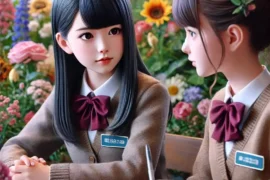
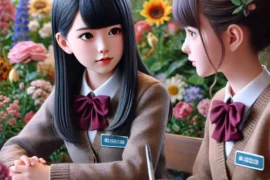
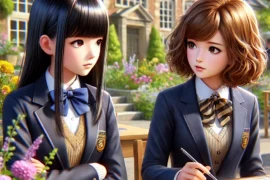
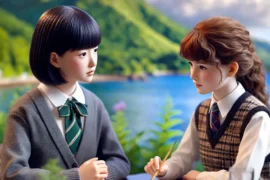
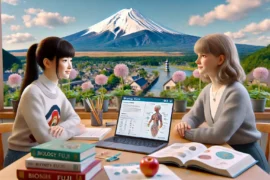
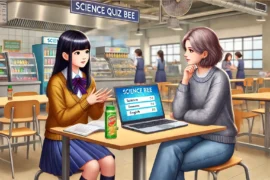
Comments are closed.